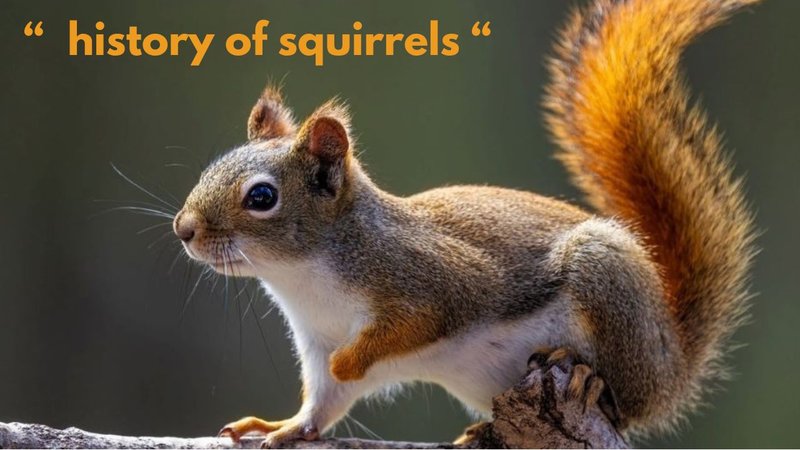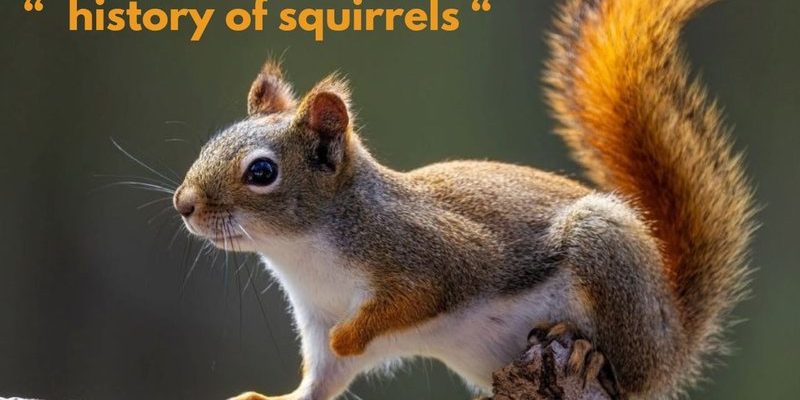
You might be surprised to learn that ground squirrels are not just one big happy family. They belong to a larger group of rodents, with various species that each have their unique traits and histories. It’s somewhat like sorting your friends into different clubs based on their interests. So, let’s dig into this evolutionary tale and uncover how these spirited animals evolved into the adorable ground squirrels we see today.
What Are Ground Squirrels?
Before diving into their evolution, it’s good to have a solid grasp of what ground squirrels are. Ground squirrels are small rodents found primarily in North America, and they belong to the family Sciuridae. They’re most recognizable for their short legs, bushy tails, and that iconic posture of standing on their hind legs, scanning their surroundings. Unlike tree squirrels, which prefer to dwell in trees, ground squirrels are burrowers.
They live in complex underground tunnels, which helps them escape predators and harsh weather. Ground squirrels are social creatures, often seen playing or foraging in groups. They primarily eat seeds, nuts, fruits, and even insects. Their playful nature and clever foraging habits make them fascinating to observe in the wild, and their antics often leave onlookers smiling.
The Rodent Family Tree
To truly appreciate ground squirrels, it’s helpful to understand their place in the larger rodent family. Rodents are the largest order of mammals, with about 2,000 species ranging from cute little mice to giant capybaras. Ground squirrels belong to the subfamily Sciurinae, which includes tree squirrels and flying squirrels.
Here’s the thing: This subfamily branched off from earlier rodent ancestors about 40 million years ago. These early rodents adapted to various environments, which led to a diverse set of traits among their descendants. Ground squirrels eventually evolved to thrive in open habitats like grasslands and prairies. This adaptation to a terrestrial lifestyle significantly shaped their behavior and physical features.
Fossil Evidence and Early Ancestors
Fossil records provide a window into the world of early ground squirrels and their ancestors. The oldest known fossils attributed to ground squirrels date back to around 20 million years ago. These fossils have been unearthed in North America and give us insight into how ground squirrels began to take shape.
Interestingly, these early ancestors were quite different from the ground squirrels we see today. They likely had longer bodies and limbs adapted for digging. Over time, as they adapted their burrowing habits and interaction with changing climates, a new variety of ground squirrel emerged. This evolutionary shift was a response to both environmental pressures and the need for effective foraging strategies.
Species Diversity: The Many Faces of Ground Squirrels
Ground squirrels are not a monolithic group; they consist of several distinct species, each with unique adaptations and traits honed over millions of years. Some well-known species include the *California ground squirrel*, *Richardson’s ground squirrel*, and *the thirteen-lined ground squirrel*, each thriving in its specific habitat.
For instance, the California ground squirrel is commonly found in coastal and valley regions in California. It has adapted to a warmer climate and often finds food in abundance there. On the other hand, Richardson’s ground squirrel is more prevalent in the open grasslands of the central United States and Canada. Their differences illustrate how various environmental conditions shaped the evolutionary paths of distinct ground squirrel species.
Adaptations for Survival
Survival is the name of the game in the wild, and ground squirrels have made some remarkable adaptations to thrive. One of the most impressive is their burrowing capability. These animals construct intricate tunnel systems that help protect them from predators like hawks, foxes, and snakes.
The design of their burrows is quite clever—they typically feature multiple entrances, which allows them to escape from danger quickly. Additionally, ground squirrels have a unique social structure. They often work together to keep watch for predators, with individuals taking turns as sentinels while others forage. This teamwork is a key factor in their survival, and it shows just how the pressure of living in the wild has shaped their behaviors.
Ground Squirrels and Their Ecosystem
Ground squirrels play an integral role in their ecosystems. They’re not just cute faces; these animals help aerate the soil through their burrowing activities. This, in turn, promotes plant growth and supports the broader ecosystem. Their feeding habits also assist in seed dispersal, allowing a variety of plants to thrive.
However, ground squirrels often find themselves in a delicate balance with their environment. While they contribute positively to their habitat, they can also become pests in agricultural areas, where they are known for munching on crops. This can lead to conflicts with farmers who see them as threats to their livelihood, creating an interesting dynamic between wildlife and agriculture.
The Future of Ground Squirrels
As we look to the future, ground squirrels face both challenges and opportunities. On one hand, habitat destruction, climate change, and agriculture are putting pressure on their populations. On the other hand, conservation efforts are helping to protect their habitats and promote coexistence with humans.
The challenge now is finding a way for ground squirrels to thrive alongside expanding human industries. Communities around the world are actively working to raise awareness about the importance of preserving ground squirrel habitats, recognizing their vital role in the ecosystem. By understanding their evolutionary history, we can appreciate these fascinating creatures and ensure a future where they continue to flourish.
In closing, the evolutionary history of ground squirrels is rich and nuanced, filled with stories of adaptation, survival, and cohabitation with humans. Their journey reflects the broader narrative of life on Earth, demonstrating the beauty and complexity of nature. Next time you spot a ground squirrel darting about, take a moment to appreciate the millions of years of evolution behind its playful antics!

